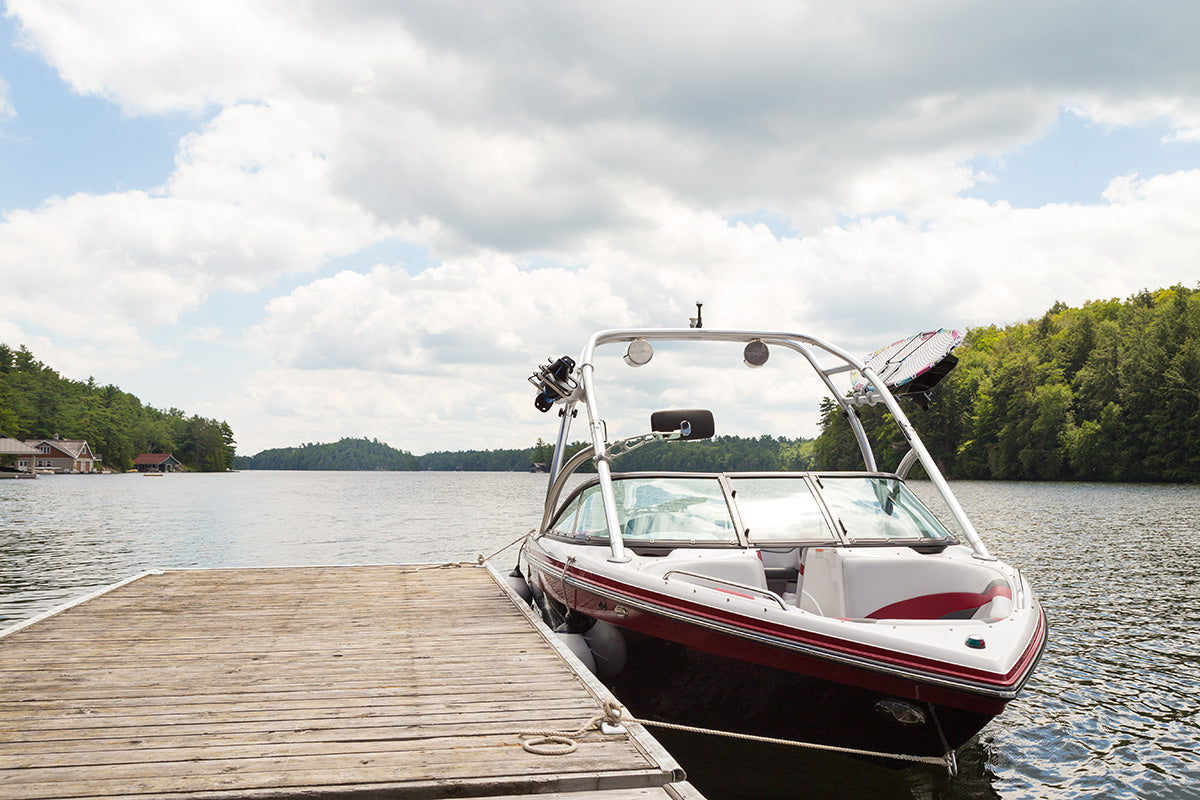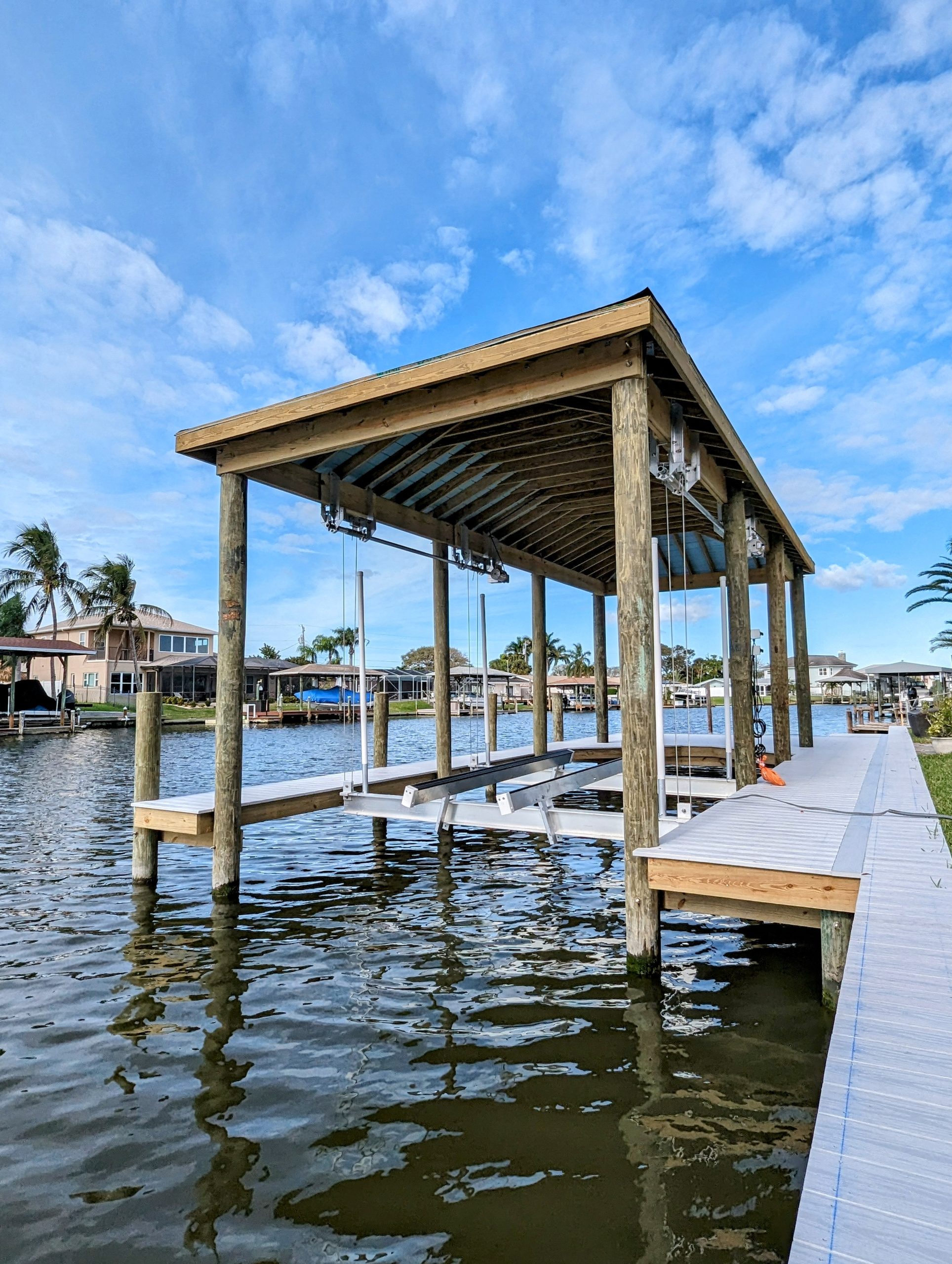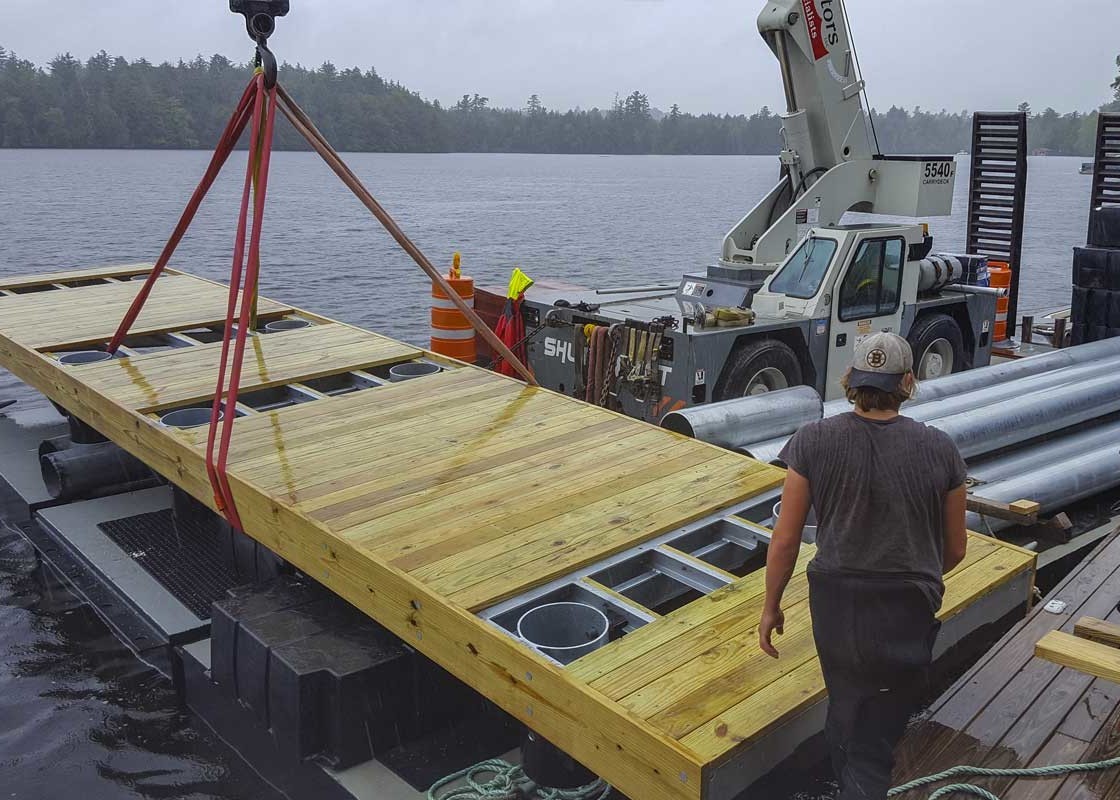Reliable Dock Repair Techniques: Making Certain Structural Integrity
Guaranteeing the structural honesty of anchors with effective fixing methods is critical for the longevity and safety of marine centers. Consequently, picking the right repair service materials, such as corrosion-resistant alloys and composite products, is crucial for longevity.
Examining Dock Damage
Assessing dock damage is a crucial very first action in making certain the structural honesty and safety and security of any kind of docking center. Trick elements to take a look at include the dock's structure, pilings, outdoor decking, and hardware (Dock Repairs).
Architectural engineers or qualified inspectors normally perform these analyses making use of specialized devices and methods. Underwater evaluations might employ sonar tools or from another location ran automobiles (ROVs) to spot immersed damages. Over water, visual evaluations are enhanced by utilizing moisture meters and various other diagnostic devices to reveal underlying problems not quickly visible to the nude eye.

Finding Fixing Products
Selecting the suitable repair products is a pivotal action in the dock reconstruction procedure, one that directly influences the durability and performance of the repaired framework. Product selection should be driven by aspects such as environmental problems, load-bearing requirements, and compatibility with existing dock components.
In addition to timber, composite materials are significantly preferred as a result of their longevity and low maintenance needs. Composites, generally made from a blend of plastic and timber fibers, provide superb resistance to rot, insects, and UV damages. For metal anchors, choosing corrosion-resistant alloys such as galvanized steel or marine-grade light weight aluminum is important to protect against corrosion and ensure architectural integrity in saline water conditions.
Epoxy resins and marine-grade sealers are crucial for fixing splits and securing joints, offering a water-proof barrier and enhancing the dock's total stamina. By carefully picking high-grade products, dock fixings can accomplish lasting outcomes, thus guarding against future degradation and making sure safe, trustworthy usage.
Architectural Support Strategies
Efficient structural reinforcement strategies are essential in making certain the security and durability of dock repairs. This technique is particularly efficient for anchors subjected to hefty lots or severe environmental conditions.
An additional essential technique is the application of fiber-reinforced polymers (FRP) These products supply high strength-to-weight ratios and excellent resistance to rust, making them suitable for enhancing wooden or concrete anchors. FRP can be applied in sheets or strips and bonded with epoxy materials to boost structural integrity.
Bracing and anchoring systems likewise play a critical function in architectural support. Cross-bracing, utilizing steel or wooden light beams, can neutralize side pressures, minimizing guiding and movement. Anchoring systems, such as helical piers or driven piles, give a secure structure by transferring loads to deeper, a lot more stable dirt layers.
Last but not least, the integration of load-distribution plates can aid disperse weight more uniformly across the dock's surface area, mitigating localized anxiety points. These strategies jointly make certain that anchors stay robust and risk-free, efficient in holding up against the rigors of their functional setting.
Advanced Repair Work Approaches

An additional innovative strategy includes underwater welding, which permits repair services to be conducted without the demand to dewater the location. This technique is particularly useful for resolving architectural concerns in submerged dock components, ensuring very little disruption to procedures. Boosted welding read here techniques, coupled with robot systems, supply accuracy and reliability, consequently expanding the life expectancy of the dock.
Additionally, cathodic security systems are carried out to stop corrosion in metallic dock structures. By utilizing sacrificial anodes or pleased current systems, these strategies effectively reduce the electrochemical processes that lead to material damage.
Last but not least, advanced surveillance innovations, such as architectural wellness monitoring (SHM) systems, offer real-time data on the condition of dock frameworks. These systems make it possible for proactive maintenance and prompt treatments, inevitably guaranteeing the long-term architectural integrity of the dock.
Maintenance and Prevention
Maintenance and avoidance are fundamental concepts that underpin the longevity and safety and security of dock structures. Routine examinations are critical, allowing for early discovery of damage, potential weaknesses, and ecological influences. A proactive strategy, including routine look for deterioration, rot, and structural changes, reduces pricey repair services and lengthens the dock's operational life.
Safety nets need to include using protective coverings to steel components to defend against rust and using cured wood to withstand degeneration. Additionally, making sure correct drain and air flow can stop water build-up, which is an usual source of architectural destruction. Integrating high quality materials and adhering to producer guidelines during building and repair work stages also play vital functions in improving resilience.

Educating employees in dock maintenance best practices ensures regular application of safety nets. Leveraging technological advances, such as drones for inspections and sensing units for real-time monitoring, can further improve upkeep efforts. By focusing on upkeep and avoidance, dock proprietors can guarantee structural integrity, functional safety, and cost-effective monitoring over the dock's lifespan.
Verdict
Finally, maintaining the structural integrity of aquatic facilities demands detailed dock repair techniques. Detailed evaluations using advanced tools uncover both visible and concealed damages, while the selection of suitable repair service products improves sturdiness. Implementing architectural support approaches addresses stress factors properly. Advanced fixing methods, combined with regular maintenance practices, make certain the dock stays operational and secure under varied ecological conditions. Adopting these techniques significantly lengthens the lifespan and functionality of aquatic infrastructure.
Ensuring the architectural integrity of anchors via effective repair work strategies is extremely important for the durability and safety and security of aquatic facilities.Picking the appropriate fixing products is a pivotal action in the dock repair process, one that straight affects the long life and efficiency of the fixed framework.Effective structural support techniques are essential in making certain the stability and durability of dock repair services. By prioritizing maintenance and avoidance, dock proprietors can make certain structural integrity, functional safety and security, and cost-effective administration over the dock's lifespan.
In conclusion, preserving the structural integrity of aquatic centers demands thorough dock fixing techniques.
Comments on “Usual Concerns That Bring About Pricey Dock Repairs”